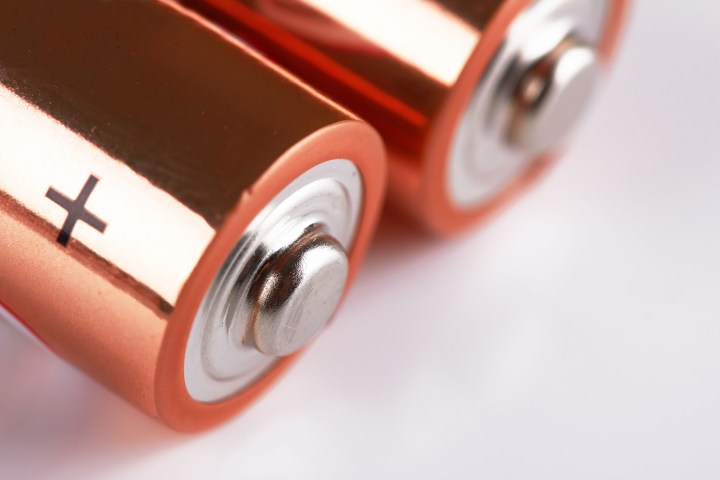
Leaking battery acid is harmful — it damages surrounding materials while also posing physical risks to those trying to clean it up. Furthermore, it’s tricky to remove, especially with traditional cleaning methods which may not prove especially effective. So, instead of grabbing a rag and trying to clean it up on your own, take a minute to check out our guide on the best methods for cleaning up battery acid problem the smart way.
Battery acid is dangerous: Wear protective clothing
It’s not referred to as an acid for nothing – it burns and we’re not simply talking about your skin. For the average corroded AA battery, you should at least equip yourself with rubber gloves and long sleeves. Larger batteries pose greater dangers: Use goggles to cover your eyes, tie your hair back if necessary, and cover your mouth with a basic allergy mask. You’d be surprised how easy it is to get battery acid in your eyes and mouth, especially when repairing or replacing punctured and shattered batteries. Since we’re talking about permanent physical damage here, take some time to effectively gear up.
This advice applies to your environment, too. For small battery projects, put down a few sheets of newspaper before starting to work. For larger projects, we advise setting up a safe zone to work in.
Do a preliminary cleaning
First, dispose of the battery if necessary. Place corroded batteries in a plastic or trash bag where they won’t have the ability to spread corrosion onto anything else. Then, set them aside to concentrate fully on cleaning. Unfortunately, heavily corroded batteries may not come out easily or (at worst) could be permanently stuck. Typically, prying them out with a screwdriver or paint scraper tends to work — you see now why goggles are important safety equipment when broken batteries can go flying.
Start with a towel or a few paper towels and clean up what you can. Your goal here is to uncover damage created by the battery acid, while also cleaning away the grime and dust obscuring your real work. Don’t use any cloth you want to save for other purposes — this is proper rag work and you’ll want to throw any rags away once finished. Don’t try to wipe away any battery acid or residue yet, just get a good view of what’s going on. Remember even dried white flakes could still possess dangerous acidic qualities.
Apply the proper cleaning agent
Let’s get technical: “Battery acid” is a misnomer. The average consumer battery in your remote or wireless mouse is actually alkaline, due to the potassium hydroxide. It still burns but it’s all the way on the other end of the pH scale. This means you’ll need to use an acid to neutralize any residue or remaining electrolyte solution. But when you move up to lead batteries and other larger batteries, the electrolyte solution typically consists of true sulfuric acid or similar chemicals, which requires a different approach. We’ll break it down:
Alkaline batteries: For typical AA and AAA batteries, you’ll need an acid solution to break down residue or spills. Luckily, you have just what you need in your kitchen. Grab your white vinegar first or your bottle of lemon juice if you’re short on vinegar. Dab a few drops on the residue and wait for it to work — it’s normal for a chemical reaction like fizzing to occur. If this happens, simply wait for it to die down. Additionally, you’ll want to avoid soaking the area all at once, so apply the acid slowly.
Acidic batteries: Here, the traditional solution of baking soda and water is much more effective. Mix a tablespoon of baking soda into a cup of water and stir. Use hot water so the baking soda dissolves more effectively. After the baking soda fully dissolves, pour the solution in short trickles around the affected area. When dealing with large batteries, it’s far better to use too much of the solution than too little. Apply liberally, wait for the fizzing to stop, then apply more. You want to neutralize as much of the acid as possible.
Large projects: If you are dealing with a battery acid spill in a professional or lab-related capacity, you’ll want to use professional products instead. The Ramsey Group has some useful commercial products for these purposes, including Fizz pHree, Acid Adsorber, and neutralizing pillows for big spills. Pay attention to OSHA and lab requirements, too.
Wipe away all residue
Once the neutralizing agent finishes its work, it’s time to clean away all remaining residue. Conduct this step in two stages for the best results on tough, caked-on acid residue.
- Soft clean: Start with throw-away towels and smaller cleaners like Q-tips. Clean up the gummy mess left behind by the cleaning agent in layers, seeing what’s left and what needs more work.
- Rougher clean: You may find patches of acid residue that won’t come off with gentle means. Keep a scouring pad, steel wool, and toothbrush handy if it looks like you’ll need some extra elbow grease. Remember to apply more cleaning agent from time to time as necessary. Once finished, switch back to soft materials, add some water, and clean everything up until it looks like new.
Check the damage
Take a look at the damage the battery acid exacts on its surrounding materials, components, and floors. Sometimes it’s nothing to worry about but you may need to replace circuits or tubes which may have become damaged. Fabric and wood may also pit or stain via battery acid but there’s not much to do to avoid this except clean the damaged areas. For concrete, consider using a cement filler designed for patch repairs to conceal any damage.
Dispose of batteries properly
Battery disposal rules vary by region. We don’t want you to get into trouble, so if you have batteries — especially large batteries — take a look at the rules and see what to do. It’s usually sufficient to drop off batteries at specific stores, landfill sites, and other areas for proper disposal.









